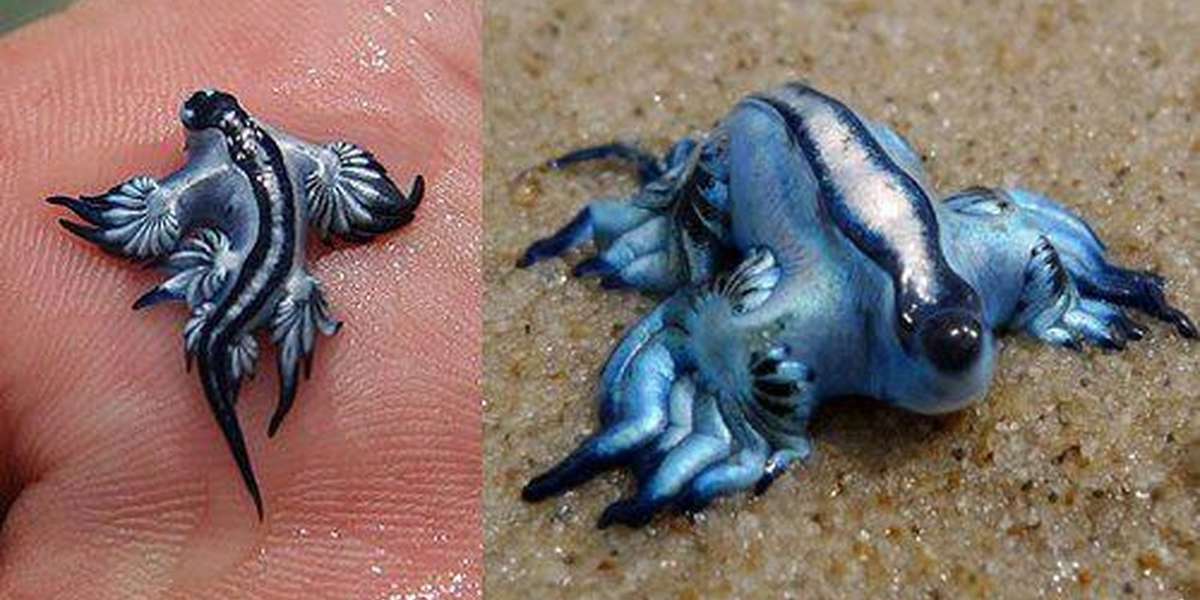5 Interesting Things You Should Know About Blue Dragons
"If there’s an animal that looks like it could have walked (or, in this case, swam) right out of a fantasy movie, it’s the Blue Dragon.
Blue Dragons, also known as a sea swallow, blue angel, & a blue ocean slug... are known as a Glaucus atlanticus in the scientific community & are tiny creatures found near beaches around the world.
While they are slug-like creatures, their bright blue 'wings' are what make them so striking, especially when moving through the water...
1. They’re Tiny Yet Venomous
Blue dragons reach an average length of just 3cm from nose to the tip of their tail, which is just over an inch in length. Despite their tiny size & lack of ability to swim around like a fish, they have an extremely painful sting that can cause an intense burning sensation...
This tiny creature may look cute, but they aren’t swimming around feeding on plankton & tiny fish. A blue dragon’s favorite food is a Portuguese Man O’War, which is a jellyfish-like organism that is actually a colony of small organisms. Like jellyfish, they have a soft top & long tendrils that can reach as much as 165 feet long!
Blue dragons use jagged teeth to bite into the tentacles & then store the Man O’War’s venom so they can use it as their own – meaning getting stung by one (those beautiful 'wings' aren’t wings or fins, but act more like the edge of a stinging nettle) is equivalent to getting stung by a Man O’War. Ouch.
3. Like Slugs on Land, Blue Dragons are Hermaphrodites
Just like slugs on land, blue dragons are hermaphrodites, which means they have both male & female reproductive organs...blue dragons are full of venom & can’t discern between friend or foe, so they have to mate at a distance using long S-shaped organs. Once mated, they produce eggs that they place on any nearby surface.
4. The Bright Blue is Camouflage
At first glance, we may assume that blue dragons’ bright blue color is to ward off predators, like many brightly colored insects & spiders on land. However, you may find it surprising to find out that this bright & beautiful blue is actually camouflage they can take advantage of when floating on the surface of the ocean. What seems so bright to us is an effective way to avoid predators from both above & below.
5. They’ll 'Swim' in Groups
You can’t say that blue dragons exactly swim, as what they actually do is use an air bubble in their stomach to float around. That said, they will move together in groups called 'fleets' which helps them find mates & feed. The only problem with fleets is it makes them vulnerable to ocean winds, which can push them to the shore where they’ll die if they don’t get pulled back out by the tide.
Blue dragons have spent more time than usual in the limelight in recent months because they’ve been showing up in usual places. Blue dragons used to only be found out at sea, but it’s believed that climate change is driving them closer to the coast, either due to the way storms are pushing them around, due to rising sea temperatures, or due to changes in their prey’s (Man O’War) behavior, which has also moved closer to the coast. If you live on the Gulf Coast of the US, you may come across one as you walk on the beach. If you see one, make sure you don’t touch it, even if it’s dead! These small creatures retain the venom of the Man O’War even after death."
freetheocean.com
Cute Critter Pics:Weekly Chuckle:

/blue-dragon--glaucus-atlanticus--blue-sea-slug-986491702-f0cb140dd639453e8a2d8c56637dce73.jpg)








No comments:
Post a Comment